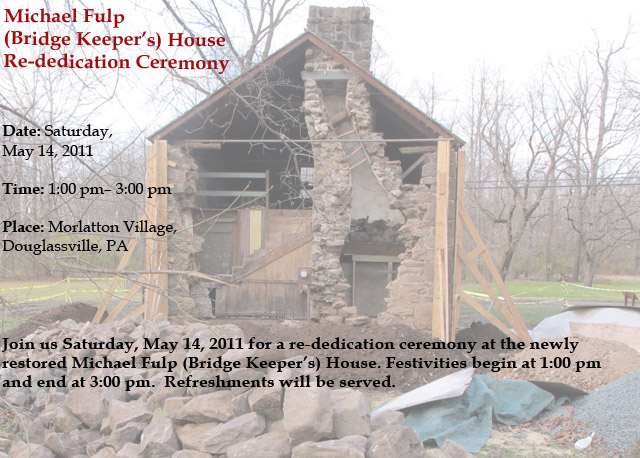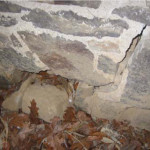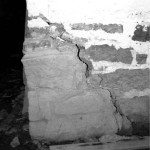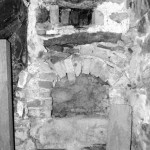Recently Completed Projects
Help Save the Deturk House
 The Johan DeTurk House has stood proudly on the banks of the Manatawny Creek in the Oley Valley for nearly two-and-a-half centuries. Recognized over fifty years ago by the U.S. government as an important architectural survivor from the American colonial period, this modest yet elegant dwelling (or multipurpose “ancillary” building) is documented in the Library of Congress by photographs, drawings and text data sheets within the Historic American Buildings Survey archives.
The Johan DeTurk House has stood proudly on the banks of the Manatawny Creek in the Oley Valley for nearly two-and-a-half centuries. Recognized over fifty years ago by the U.S. government as an important architectural survivor from the American colonial period, this modest yet elegant dwelling (or multipurpose “ancillary” building) is documented in the Library of Congress by photographs, drawings and text data sheets within the Historic American Buildings Survey archives.
Its thick stone walls, pent roof, doorway hood, one-room floor plan, massive summer beam, vaulted cellar, paint decoration, and other surviving (and some lost) structural features and decorative details are characteristic of the Germanic, Moravian, and Huguenot cultural influences and skills of Oley’s earliest European settlers, and reflect the inherited medieval craft traditions employed by them. Despite the enduring quality of the construction materials and methods used by its builders, this prime example of Pennsylvania rural domestic architecture is now endangered.
 As the photos show, decades of intrusion of surface runoff and flood water have eroded the foundation mortar and its arched vault supports, and have caused widening cracks and threatening shifts in critical areas of the walls. This erosion, gravity, and other natural forces and stresses have seriously impaired the capacity of the foundation masonry and structural timbers to carry the wall, floor, framing, and roof loads.
As the photos show, decades of intrusion of surface runoff and flood water have eroded the foundation mortar and its arched vault supports, and have caused widening cracks and threatening shifts in critical areas of the walls. This erosion, gravity, and other natural forces and stresses have seriously impaired the capacity of the foundation masonry and structural timbers to carry the wall, floor, framing, and roof loads.
The Trust and its consultants have developed a comprehensive program to divert the surface water away from the building by re-grading the abutting ground areas and constructing a retaining wall to deflect the runoff to the creek bank over the natural drainage course. Flood damage mitigation will also be given significant emphasis in the remediation plan. The structural remedy includes re-setting displaced foundation stones and vault segments, and applying traditionally formulated bed mortar and tooled weather-pointing to secure and protect the historic stone walls.
The Trust and its consultants have developed a comprehensive program to divert the surface water away from the building by re-grading the abutting ground areas and constructing a retaining wall to deflect the runoff to the creek bank over the natural drainage course. Flood damage mitigation will also be given significant emphasis in the remediation plan. The structural remedy includes re-setting displaced foundation stones and vault segments, and applying traditionally formulated bed mortar and tooled weather-pointing to secure and protect the historic stone walls.





